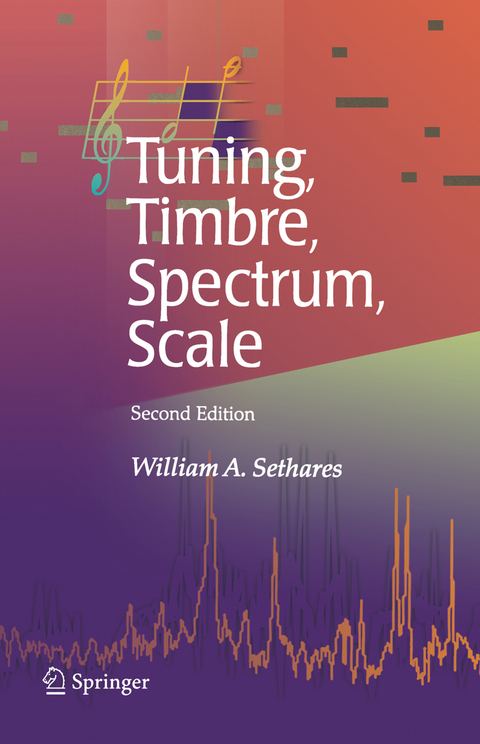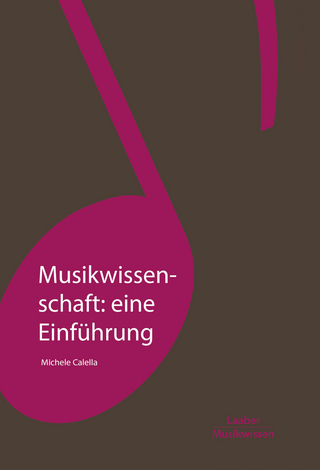
Tuning, Timbre, Spectrum, Scale
Seiten
2010
|
2nd ed. 2005
Springer London Ltd (Verlag)
978-1-84996-922-2 (ISBN)
Springer London Ltd (Verlag)
978-1-84996-922-2 (ISBN)
Tuning, Timbre, Spectrum, Scale focuses on perceptions ofconsonance and dissonance, and how these are dependent on timbre. Applications include methods of adapting sounds for arbitrary scales,ways to specify scales for nonharmonic sounds, and techniques of soundmanipulation based on maximizing (or minimizing) consonance.
Tuning, Timbre, Spectrum, Scale focuses on perceptions ofconsonance and dissonance, and how these are dependent on timbre. This alsorelates to musical scale: certain timbres sound more consonant in some scalesthan others. Sensory consonance and the ability to measure it have importantimplications for the design of audio devices and for musical theory andanalysis. Applications include methods of adapting sounds for arbitrary scales,ways to specify scales for nonharmonic sounds, and techniques of soundmanipulation based on maximizing (or minimizing) consonance. Specialconsideration is given here to a new method of adaptive tuning that canautomatically adjust the tuning of a piece based its timbral character so as tominimize dissonance. Audio examples illustrating the ideas presented areprovided for free on the Springer Extras website (http://extras.springer.com). Thisunique analysis of sound and scale will be of interest to physicists andengineers working in acoustics, as well as tomusicians and psychologists
Tuning, Timbre, Spectrum, Scale focuses on perceptions ofconsonance and dissonance, and how these are dependent on timbre. This alsorelates to musical scale: certain timbres sound more consonant in some scalesthan others. Sensory consonance and the ability to measure it have importantimplications for the design of audio devices and for musical theory andanalysis. Applications include methods of adapting sounds for arbitrary scales,ways to specify scales for nonharmonic sounds, and techniques of soundmanipulation based on maximizing (or minimizing) consonance. Specialconsideration is given here to a new method of adaptive tuning that canautomatically adjust the tuning of a piece based its timbral character so as tominimize dissonance. Audio examples illustrating the ideas presented areprovided for free on the Springer Extras website (http://extras.springer.com). Thisunique analysis of sound and scale will be of interest to physicists andengineers working in acoustics, as well as tomusicians and psychologists
The Octave Is Dead … Long Live the Octave.- The Science of Sound.- Sound on Sound.- Musical Scales.- Consonance and Dissonance of Harmonic Sounds.- Related Spectra and Scales.- A Bell, A Rock, A Crystal.- Adaptive Tunings.- A Wing, An Anomaly, A Recollection.- The Gamelan.- Consonance-Based Musical Analysis.- From Tuning to Spectrum.- Spectral Mappings.- A “Music Theory” for 10-tet.- Classical Music of Thailand and 7-tet.- Speculation, Correlation, Interpretation, Conclusion.
| Erscheint lt. Verlag | 13.10.2010 |
|---|---|
| Zusatzinfo | XVIII, 426 p. |
| Verlagsort | England |
| Sprache | englisch |
| Maße | 155 x 235 mm |
| Themenwelt | Kunst / Musik / Theater ► Musik ► Musiktheorie / Musiklehre |
| Mathematik / Informatik ► Informatik | |
| Technik ► Elektrotechnik / Energietechnik | |
| ISBN-10 | 1-84996-922-1 / 1849969221 |
| ISBN-13 | 978-1-84996-922-2 / 9781849969222 |
| Zustand | Neuware |
| Haben Sie eine Frage zum Produkt? |
Mehr entdecken
aus dem Bereich
aus dem Bereich
Grundbegriffe, Harmonik, Formen, Instrumente
Buch | Softcover (2021)
Philipp Reclam (Verlag)
7,80 €
Jazz als Gegenkultur im westlichen Nachkriegsdeutschland
Buch | Hardcover (2024)
edition text + kritik (Verlag)
42,00 €


